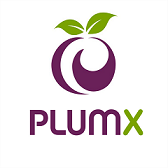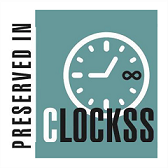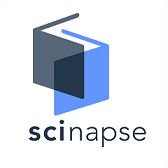Prevalence of Anaemia Among Pregnant Adolescents in Kakamega County, Kenya
Abstract
Anaemia in pregnancy remains a major public health challenge, with pregnant adolescents at increased risk due to their dual nutritional needs. This study assessed the intake of iron and folic acid supplements (IFAS) and anaemia prevalence among pregnant adolescents in Kakamega County, Kenya. A descriptive cross-sectional study was conducted among 120 pregnant adolescents attending antenatal care at Malava County Hospital. Data were collected using pre-tested questionnaires and analysed using SPSS version 29.0. Results showed that 95.8% (n=115) of participants adhered to IFAS, while 4.2% (n=5) reported intake less than five days a week. Despite high adherence, anaemia prevalence remained notable, with 51% having normal haemoglobin levels, 44% mild anaemia, and 5% moderate anaemia. Education level, timing of first ANC visit, distance to health facilities, and nutrition counselling were significant determinants of adherence. The findings highlight the importance of strengthening adolescent-friendly antenatal services, improving access to supplements, and addressing barriers such as myths, side effects, and limited social support. Tailored interventions integrating community awareness, health worker training, and peer support may enhance IFAS adherence and reduce anaemia among pregnant adolescents
Downloads
References
Annan, R. A., Gyimah, L. A., Apprey, C., Edusei, A. K., Asamoah-Boakye, O., Aduku, L. N. E., Azanu, W., & Lutterodt, H. E. (2021). Factors associated with iron deficiency anemia among pregnant teenagers in Ashanti Region, Ghana: A hospital-based prospective cohort study. PLOS ONE, 16(4), e0250246. https://doi.org/10.1371/journal.pone.0250246
Baye, T., Alem, A. Z., & Merid, M. W. (2025). Pooled prevalence of anaemia and its associated factors among adolescent girls in East and West Africa: A systematic review and meta-analysis. BMC Public Health, 25, 2482. https://doi.org/10.1186/s12889-025-23701-4
Bisrat, H., Abdu, O., Tarkegn, N., Mesfin, T., Aweke, K., Dureti, A., Aboma, M., & Kedir, T. R. (2024). Factors associated with compliance of weekly iron and folic acid supplementation among school-going adolescents in Debub Achefer District, Northwest Ethiopia: A school-based cross-sectional study. Scientific Reports, 14, 9980. https://www.nature.com/articles/s41598-024-60800-5
Bisrat, Z., Kebede, D. L., & Gebremariam, A. D. (2021). Adherence to iron and folic acid supplementation among pregnant women attending antenatal care in selected public health facilities in Ethiopia: A cross-sectional study. BMC Pregnancy and Childbirth, 21(1), 1–9. https://doi.org/10.1186/s12884-021-03697-0
Gonete, K. A., Tariku, A., Wami, S. D., & Derso, T. (2018). Prevalence and associated factors of anemia among adolescent girls attending high schools in Dembia District, Northwest Ethiopia, 2017. Archives of Public Health, 76, 79. https://doi.org/10.1186/s13690-018-0324-y
Maru, M., Ngari, R., Wafula, J., & Sartorius, B. (2020). Mapping anaemia prevalence among pregnant women in Kenya, 2016–2019: Spatial and temporal patterns. BMC Public Health, 20(1), 983. https://doi.org/10.1186/s12889-020-09061-4
Nutrition International. (2023, February). Kenya Country Brief – February 2023. Nutrition International.https://www.nutritionintl.org/wp-content/uploads/2023/02/Kenya-Country-Brief-Feb-2023-Digital
Kenya National Bureau of Statistics (KNBS), & ICF. (2023). Kenya Demographic and Health Survey 2022. KNBS and ICF. https://dhsprogram.com/pubs/pdf/PR143/PR143.pdf
United Nations Educational, Scientific and Cultural Organization (UNESCO). (2016). Teenage pregnancy and motherhood situation in Kenya: The county burden and driving factors (Policy brief). https://healtheducationresources.unesco.org/library/documents/teenage-pregnancy-and-motherhood-situation-kenya-county-burden-and-driving
Willay, H., & Tidy, C. (2022). Anemia in pregnancy. Patient.info. https://patient.info/doctor/anaemia-in-pregnancy
Intiful, F. D., Wiredu, E. K., Asare, G. A., Asante, M., & Adjei, D. N. (2016). Anemia in pregnant adolescent girls with malaria and practicing pica. Pan African Medical Journal, 24, Article 96. https://doi.org/10.11604/pamj.2016.24.96.9282
World Health Organization (WHO). (2018a). Weekly iron and folic acid supplementation as an anemia-prevention strategy in women and adolescent girls: Lessons learnt from implementation of programmes among non-pregnant women of reproductive age. https://www.who.int/nutrition/publications/micronutrients/WIFS-anaemia-prevention-women-adolescent-girls/en/
World Health Organization (WHO). (2018b). Developing and validating an iron and folic acid supplementation indicator for tracking progress towards global nutrition monitoring framework targets: Final report. https://www.who.int/nutrition/publications/iron-folic-indicator-GNMF/en/
World Health Organization (WHO). (2022). Prevalence of anemia among pregnant women (%). World Bank. https://data.worldbank.org/indicator/SH.PRG.ANEM?locations
World Health Organization (WHO). (2020). Global anemia reduction efforts among women of reproductive age: Impact, achievement of targets and way forward for optimizing efforts. https://www.who.int/publications/i/item/9789240012202
World Health Organization (WHO). (2024). Anaemia in women and children: Prevalence of anaemia in pregnant women (aged 15–49 years) – 2023 estimates. WHO. https://www.who.int/data/gho/data/themes/topics/anaemia_in_women_and_children
Kimye, J., Ahoya, B., Kavle, J., & Nyaku, A. (2017). Barriers to maternal iron-folic acid supplementation and compliance in Kisumu & Migori, Kenya. USAID. https://www.mcsprogram.org/wp-content/uploads/2018/04/Kenya-FGD-IFAS.pdf
Teshale, B. T., Tesema, G. A., Worku, M. G., Yeshaw, Y., & Tessema, Z. T. (2020). Anemia and its associated factors among women of reproductive age in Eastern Africa: A multilevel mixed-effects generalized linear model. PLOS ONE, 15(1), e0229432. https://www.ncbi.nlm.nih.gov/pmc/articles/PMC7485848
Odhiambo, J. N., & Sartorius, B. (2020). Mapping of anemia prevalence among pregnant women in Kenya (2016–2019). BMC Pregnancy and Childbirth, 20, Article 711. https://doi.org/10.1186/s12884-020-03380-2
Kamau, M., Mirie, W., Kimani, S., & Mugoya, I. (2019). Effect of community-based health education on knowledge and attitude towards iron and folic acid supplementation among pregnant women in Kiambu County, Kenya: A quasi-experimental study. PLOS ONE, 14(11), e0224361. https://doi.org/10.1371/journal.pone.0224361
World Health Organization (WHO). (2024). Anaemia in women and children: Prevalence of anaemia in pregnant women (aged 15–49 years) – 2023 estimates. WHO. https://www.who.int/data/gho/data/themes/topics/anaemia_in_women_and_children
Copyright (c) 2025 Apwacho Rosemary Muholo, Aswani Ann Musotsi, PhD, Jane Naliaka Situma, PhD

This work is licensed under a Creative Commons Attribution 4.0 International License.




























